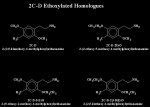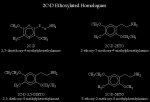Trogdor
Bluelighter
I'd like to learn a bit more about neuropharmacological organic chemisty (as time permits), and reading a few things I noticed that the word tweetio popped up routinely, yet I'm clueless as to what it is. Is it a specific type of isomer? Google and wikipedia are of very little help.
If you have any recommended reading I should get it would be appreciated. I've been meaning to fully read the online versions pihkal/tihkal and/or purchase the actual publications, but as of yet I haven't found the time.
Thanks
-Trog
If you have any recommended reading I should get it would be appreciated. I've been meaning to fully read the online versions pihkal/tihkal and/or purchase the actual publications, but as of yet I haven't found the time.
Thanks
-Trog







